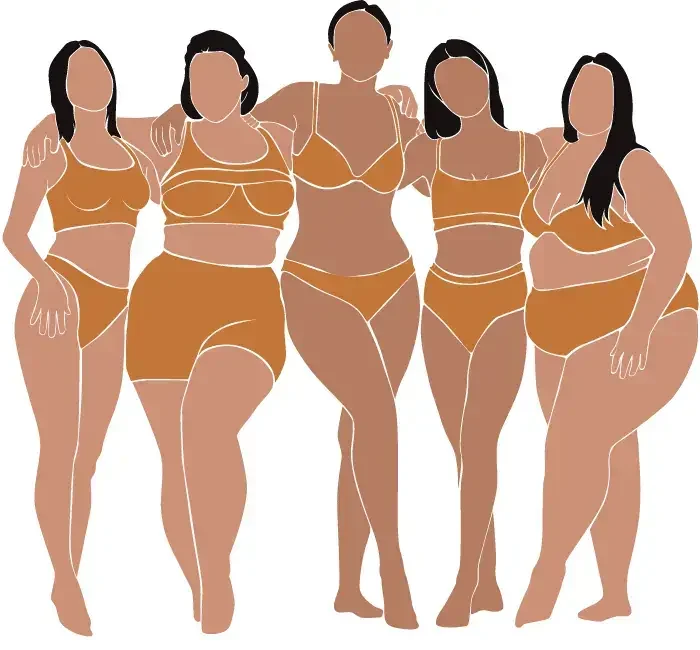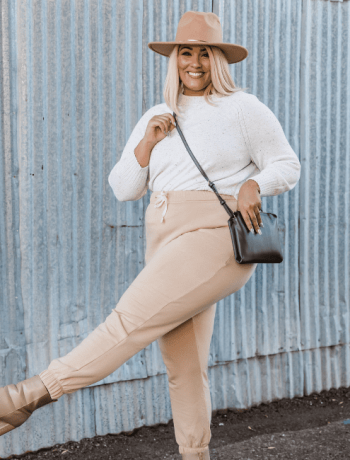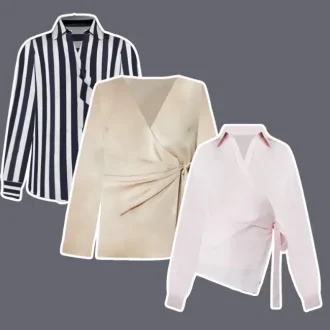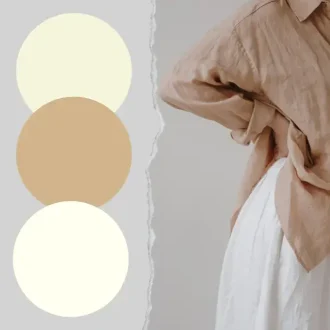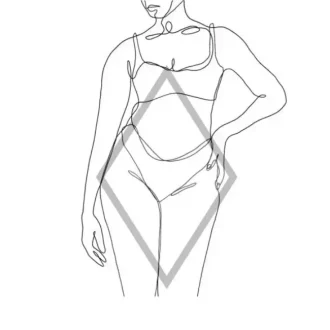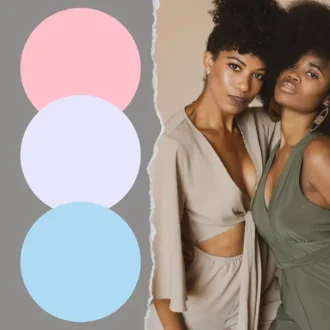Fashion is more than just clothing, it’s a way to express confidence and embrace your unique curvy body type.
In this comprehensive guide, we will explore different body types, from the classic hourglass figure to the pear and apple shapes, providing styling tips and clothing choices that enhance your natural curves.
Understanding your body, including accurate waist measurements and bust measurements, is crucial for choosing clothes that fit perfectly.
We’ll also discuss the health benefits of curvy bodies, debunk common myths, and promote well-being and self-acceptance among curvy people. Let’s celebrate your curves and find clothes that make you feel fabulous!
What Are Curvy Body Types?

The spoon shape, similar to the pear shape, has a fuller lower body with a smaller upper body and waist. This voluptuous, curvaceous body type is known for its well-defined curves and prominent hips.
Understanding the unique characteristics of the spoon body type can help women with curves find clothing that accentuates their best features, promotes confidence, and celebrates their beautiful female body. Embracing this shape allows for a better appreciation of one’s unique body size and structure.
Definition and Importance of Recognizing Curvy Body Types
Curvy bodies feature pronounced curves, with a higher waist-to-hip ratio that accentuates the natural shape. Recognizing and celebrating curvy body types promotes body positivity and self-acceptance, encouraging individuals to embrace their natural forms. This is crucial in an era where media and fashion industries are gradually shifting towards inclusivity and diversity.
Differences Between Curvy, Fat, Thick, and Full-Figured
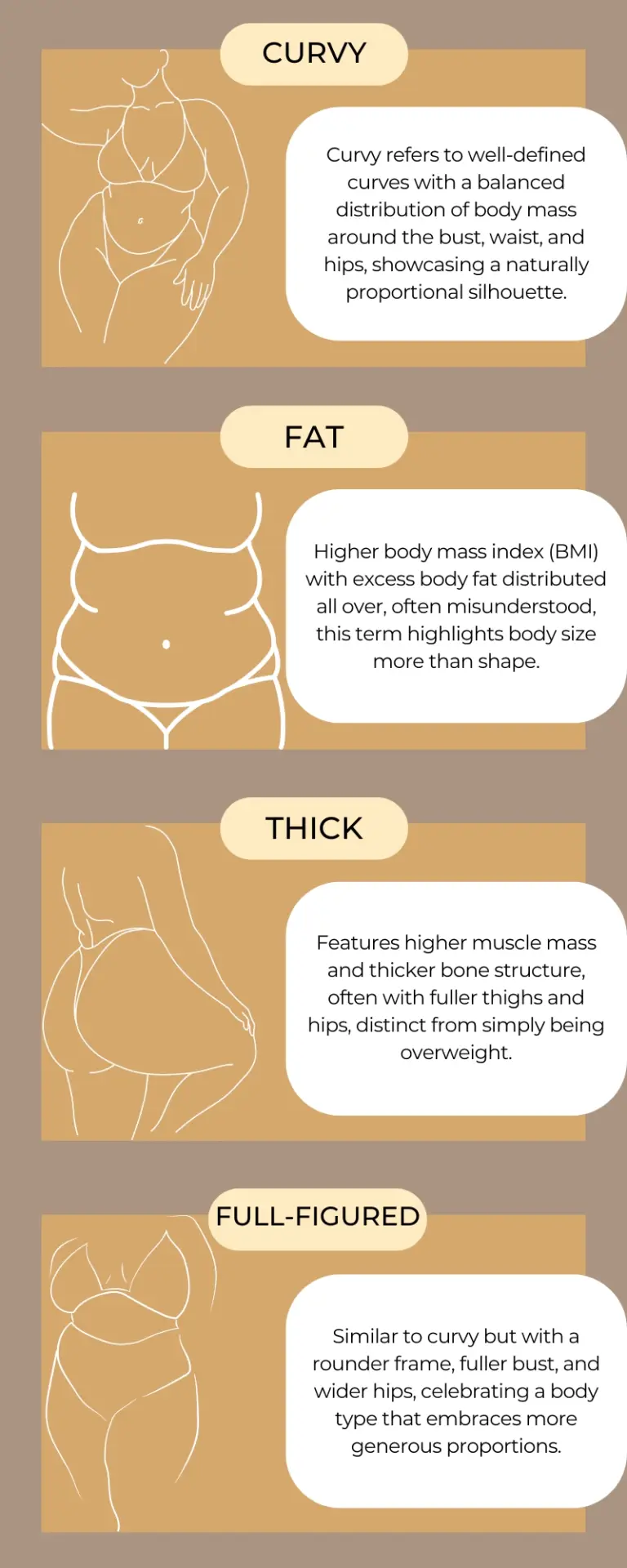
Curvy: Refers to well-defined curves with a balanced distribution of body mass around the bust, waist, and hips.
Fat: Higher body mass index (BMI) with excess body fat distributed all over.
Thick: Higher muscle mass and thicker bone structure, often with fuller thighs and hips.
Full-Figured: Similar to curvy but with a rounder frame, fuller bust, and wider hips.
Embracing Curvy Body Types
Women with curves often face challenges such as body shaming and difficulties in finding well-fitting clothing. However, the fashion industry is evolving to include a broader range of body shapes and sizes, offering more options for curvy ladies. From skinny jeans that hug well-defined curves to a-line skirts that flatter fuller hips, there are numerous stylish choices available.
Different Curvy Body Types
Understanding your body shape, including different body shapes, is crucial for curvy people to embrace their natural beauty and select the most flattering clothing.
Recognizing your body type enhances wardrobe choices and allows you to highlight your best features effectively. This knowledge helps curvy people feel more confident and stylish, ensuring their clothing complements their unique figure.
1. Hourglass Shape

The hourglass shape is often celebrated for its balanced proportions and defined curves. Women with this body type feature a well-defined waist along with proportionate bust and hip measurements, resulting in a balanced overall appearance.
Characteristics:
- Well-balanced bust and hips
- Smaller waist
- Proportional upper and lower body
Styling Tips:
Emphasize the Waist: Fitted tops and dresses accentuate your natural curves. Look for wrap dresses, peplum tops, and belted jackets.
Accentuate Curves: High-waisted skirts and pants enhance your natural curves. Choose pencil skirts, tailored trousers, and bodycon dresses.
Neckline Variety: Opt for V-neck and scoop-neck tops to flatter the bust and elongate the neck.
Avoid Baggy Clothes: Loose clothing can hide your curves. Instead, go for tailored and fitted pieces that showcase your figure.
2. Pear Shape
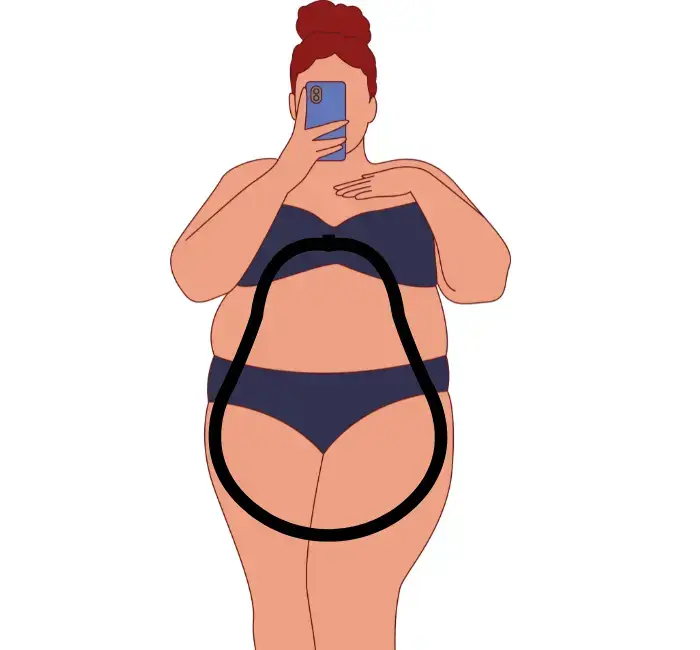
The pear-shaped figure is characterized by a smaller upper body and fuller hips, creating a naturally feminine silhouette. This shape often includes a smaller waist and fuller lower body.
Characteristics:
Narrow shoulders
Wider hips and thighs
Defined waist
Styling Tips:
Highlight the Upper Body: Use bright colors and patterns on your upper body to draw attention upward. Boat necks, cowl necks, and embellished tops work well.
Balance the Lower Body: A-line skirts and dresses help balance out fuller hips. Choose skirts that flare out from the waist to create a more balanced silhouette.
Structured Tops: Blazers, jackets, and tops with shoulder details can add width to the shoulders, balancing the proportions.
Dark Bottoms: Dark-colored pants and skirts can minimize the appearance of the hips and thighs.
3. Apple Shape
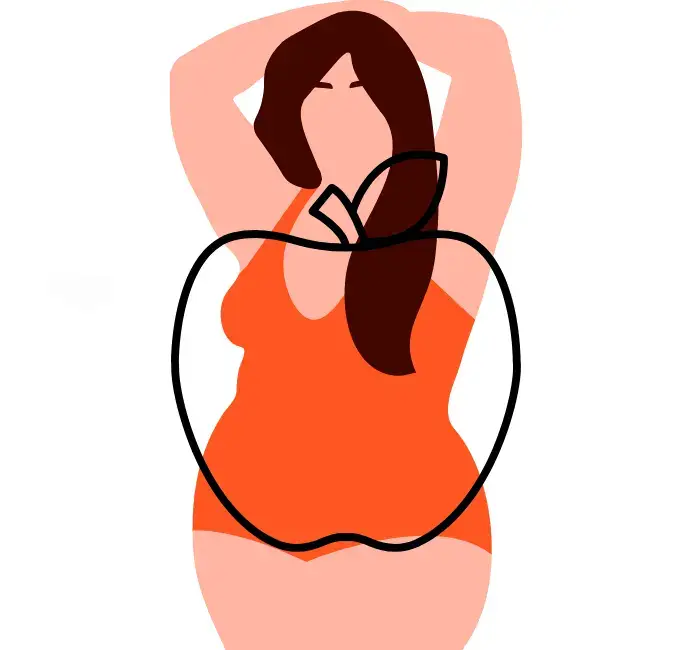
Women with an apple shape typically have a larger bust and midsection, with narrower hips. This curvy body type may have less definition at the waist but carries weight around the upper body. Understanding this body type helps in selecting clothes that create a balanced look.
Characteristics:
Larger bust and midsection
Narrow hips
Less defined waist
Styling Tips:
Create a Smaller Waist: Empire waistlines and wrap dresses can create the illusion of a smaller waist.
Elongate the Torso: V-neck tops and dresses elongate the torso and draw attention away from the midsection.
Flowy Fabrics: Avoid clingy fabrics around the midsection. Opt for flowy blouses and tunics that skim the body.
Structured Pieces: Tailored blazers and jackets can add structure and shape to your look.
4. Inverted Triangle (Strawberry) Shape
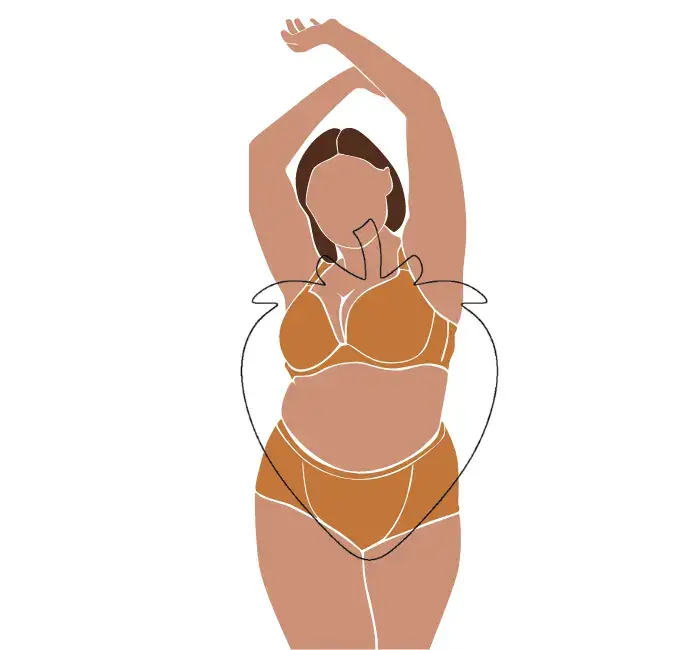
The inverted triangle shape features broad shoulders and a prominent bust, with narrower hips. This body type often has a more athletic build and a smaller waist.
Characteristics:
Broad shoulders
Prominent bust
Narrower hips and waist
Styling Tips:
Balance the Lower Body: Flared pants and A-line skirts add volume to the lower half, balancing broad shoulders.
Soften the Shoulders: V-neck tops soften shoulder width and draw attention to the waist. Avoid shoulder pads and horizontal stripes.
Structured Bottoms: Choose pants and skirts with structure to balance the upper body.
Simple Tops: Stick to simple, understated tops to avoid adding bulk to the upper body.
5. Spoon Shape
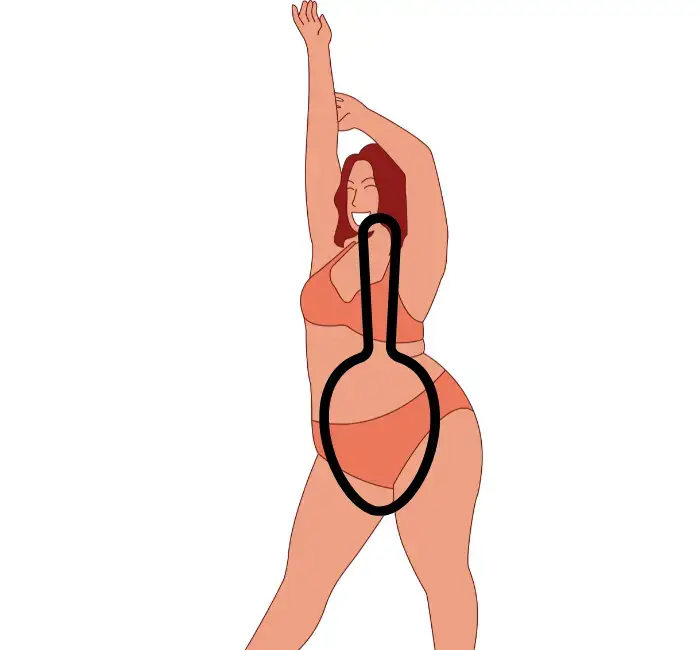
The spoon shape, much like the triangle shape, features a fuller lower body paired with a smaller upper body and waist. This curvy body type is characterized by well-defined curves and prominent hips. Understanding the unique attributes of the spoon body type can help curvy people find clothing that enhances their best features, boosts confidence, and celebrates their beautiful figure.
Characteristics:
Full bust and hips
Small waist
Well-defined curves
Styling Tips:
Highlight Curves: Fitted tops and pencil skirts enhance your natural curves. Look for clothes that fit closely to the body and always select plus-size options where needed to ensure a comfortable and flattering fit.
High-Waisted Bottoms: High-waisted jeans and skirts draw attention to the waist.
Balanced Outfits: Avoid boxy and shapeless clothing. Choose outfits that balance the upper and lower body.
Tailored Pieces: Opt for tailored blazers and jackets to add structure.
6. Mango Shape
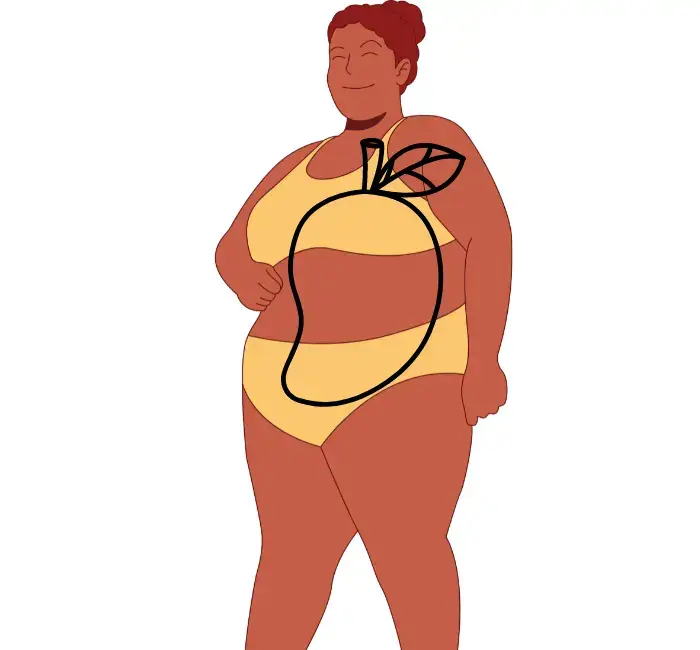
The mango shape is characterized by a round midsection and a larger waistline compared to the hips and bust. Women with this body type often carry weight around their middle.
Characteristics:
Round midsection
Larger waistline compared to hips and bust
Styling Tips:
Flowy Dresses and Skirts: Choose flowy, A-line dresses and skirts that skim over the midsection. Light materials like chiffon are great choices.
High-Waisted Pants: High-waisted pants and skirts can draw attention away from the midsection. Look for pieces that cinch at the smallest part of your waist.
Structured Blazers: Structured blazers can create a more defined waist and add shape to your look.
Vertical Lines: Clothing with vertical lines can elongate the body and create a slimming effect.
How to Measure Your Curvy Body Shape
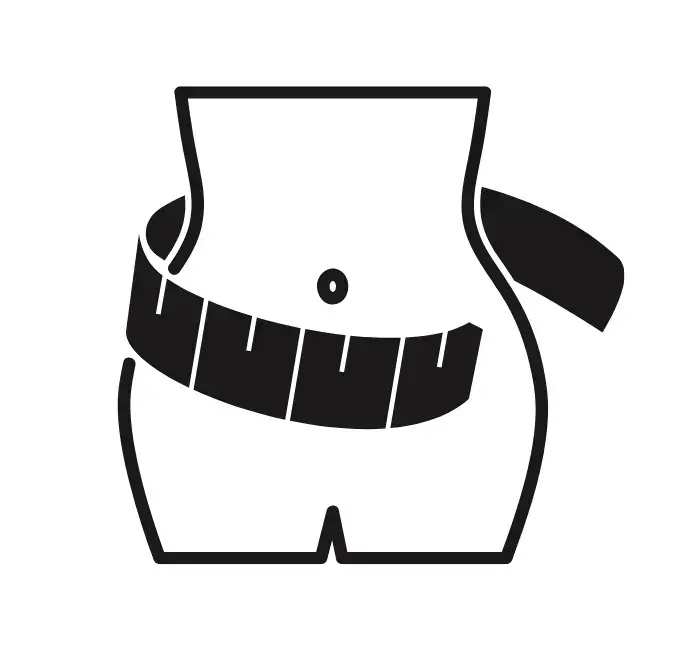
Accurately measuring your body is essential for finding clothes that fit well and flatter your figure. Here’s a detailed guide on how to take your bust, waist, and hip measurements, and how to use these measurements to determine your body shape.
Steps to Measure Curvy Bodies
What You Need:
Measuring tape
Full-length mirror
Pen and paper
Comfortable underwear (well-fitting bra and undies without compression)
1. Measuring Your Bust
Steps:
Wear a supportive, well-fitting bra.
Stand straight in front of a mirror.
Wrap the measuring tape around the fullest part of your bust, making sure it is parallel to the floor.
Ensure the tape is snug but not too tight.
2. Measuring Your Waist
Steps:
Find your natural waistline by bending to one side; the natural crease is your waist.
Stand upright and position the measuring tape around your waist, ensuring it stays level with the floor.
Measure at the narrowest part of your waist, usually just above the belly button.
3. Measuring Your Hips
Steps:
Stand with your feet together.
Wrap the measuring tape around the fullest part of your hips and buttocks.
Make sure the tape is parallel to the floor and snug but not tight.
Calculating Waist-to-Hip Ratio
The waist-to-hip ratio helps determine your body shape. Use the following formula:
Waist-to-Hip Ratio = Waist Measurement / Hip Measurement.
Hourglass Shape: Ratio around 0.7
Pear Shape: Higher hip measurement
Apple Shape: Larger waist measurement
Strawberry Shape: Broader shoulders, smaller waist
Spoon Shape: Fuller hips and bust, smaller waist
Mango Shape: Larger waistline compared to hips and bust
Understanding Your Measurements
Recording these measurements helps in choosing the right clothing sizes and styles that flatter your body type. Regularly updating your measurements ensures accuracy, especially before making new clothing purchases.
Fashion Tips for Curvy Body Types
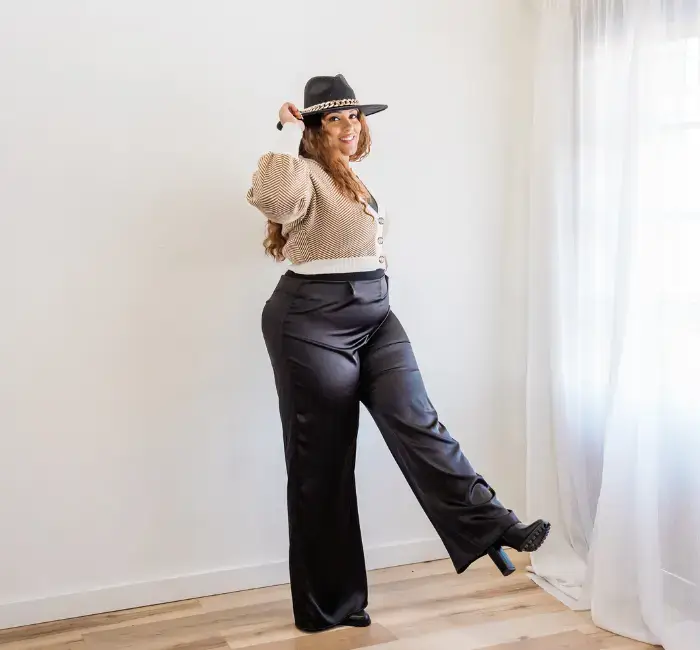
Fashion for curvy body types focuses on emphasizing natural curves and finding a perfect fit that enhances confidence while considering different body shapes. Here are some essential tips:
General Tips
Importance of Fit: Properly fitted clothes highlight your curves. Avoid baggy clothing that hides your shape.
Choosing the Right Fabrics: Opt for stretchy, breathable fabrics that provide comfort and contour your body.
Emphasizing Assets: Highlight your best features. For instance, wear clothing with a defined waistline to accentuate your curves.
Specific Tips for Each Body Type
Hourglass Shape: Wrap dresses, peplum tops, high-waisted skirts. Examples: Fit and flare skirts, skinny jeans, tailored trousers.
Pear Shape: Fit and flare skirts, boat neck tops, blazers with shoulder pads. Examples: Dark-colored pants, bright tops.
Apple Shape: Empire waistlines, V-neck tops, flowy blouses. Examples: Wrap dresses, tailored jackets.
Strawberry Shape: Flared pants, fit and flare skirts, simple tops. Examples: Structured bottoms, V-neck tops.
Spoon Shape: Fitted tops, high-waisted jeans, pencil skirts. Examples: Tailored blazers, balanced outfits.
Mango Shape: Flowy dresses, high-waisted pants, structured blazers. Examples: Vertical lines in clothing.
Building a Wardrobe for Curvy Women
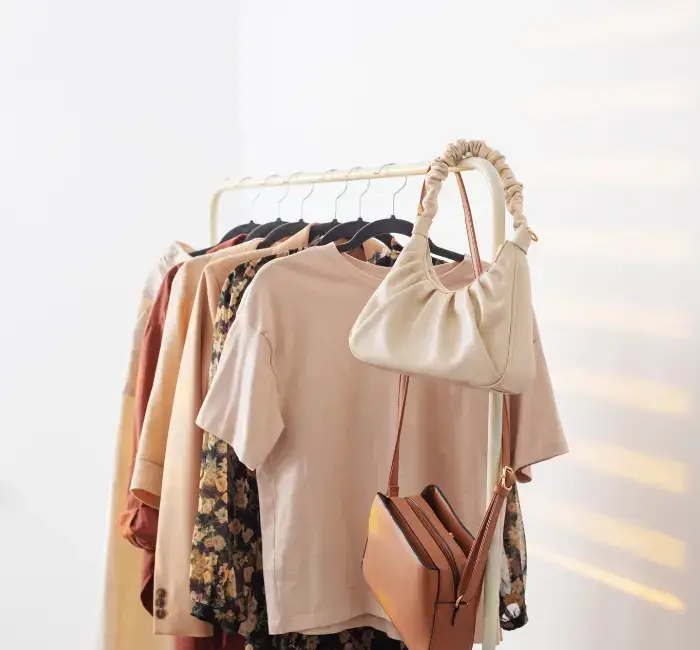
Curvy women should build a wardrobe with essentials like well-fitted jeans, versatile dresses, and tailored trousers. Selecting flattering pieces ensures you always look and feel your best.
Essentials Every Curvy Woman Should Have
A well-rounded wardrobe for curvy individuals should include key pieces that highlight and flatter their figure. Here are some essentials:
Well-fitted jeans: Opt for high-waisted styles that accentuate the waist.
Classic blazers: Structured blazers add definition and can be paired with various outfits.
Versatile dresses: Wrap dresses and A-line dresses are perfect for enhancing curves.
Tailored trousers: These provide a sleek silhouette and can be dressed up or down.
Supportive undergarments: Good quality bras and shapewear that fit well.
Tips on Selecting Flattering Pieces
Choosing clothes that enhance your shape involves understanding your body type and selecting pieces accordingly:
Highlight the Waist: Look for dresses and tops with cinched waists or belts.
Play with Proportions: Pair fitted tops with flared bottoms or vice versa to create balance.
Choose the Right Fabrics: Opt for stretchy, breathable materials that contour your body.
Pay Attention to Fit: Ensure clothes fit well at the shoulders and hips, avoiding overly tight or baggy items.
Examples of Versatile Outfits
Here are some outfit ideas that can be mixed and matched for various occasions:
Casual Chic: High-waisted jeans, a fitted blouse, and a classic blazer.
Office Ready: Tailored trousers, a wrap top, and a structured blazer.
Evening Elegance: A wrap dress paired with heels and statement jewelry.
Weekend Relaxed: A-line skirt with a fitted top and comfortable flats.
Confidence and Body Positivity

Confidence and body positivity are vital for those with a curvy figure. Wearing the right clothes, engaging in positive self-talk, and following inspiring role models boost self-confidence and promote self-acceptance.
Importance of Self-Love and Confidence
Embracing your curvy body type involves practicing self-love and building confidence. It’s important to focus on what makes you feel good and celebrate your unique shape.
Ways to Boost Body Confidence
Wear Clothes That Make You Feel Fabulous: Choose outfits that highlight your best features.
Engage in Positive Self-Talk: Remind yourself of your worth and beauty.
Follow Inspiring Curvy People: Social media can be a great source of inspiration and community.
Common Myths and Misconceptions
Common myths about curvy body types include the misconception that curvy equals overweight. In reality, curvy refers to body shape, not size. Debunking these myths helps promote a more inclusive view of body diversity.
Addressing Myths
- Myth: Curvy equals overweight.
Fact: Curvy refers to body shape, not size or weight.
- Myth: Curvy women can’t wear trendy clothes.
Fact: Fashion is for everyone, and there are plenty of stylish options for curvy women.
Health Benefits of Curvy Bodies
Curvy bodies come with numerous health benefits that are often overlooked. Here are some key advantages:
Lower Risk of Heart Disease and Diabetes: Studies suggest that individuals with a higher distribution of body fat around the hips and thighs, typical of many women with curves, have a lower risk of heart disease and diabetes. The fat stored in these areas tends to be less harmful than abdominal fat.
Better Fat Storage and Mobilization: Curvy bodies often store fat in a way that’s more beneficial for metabolism and overall health. This type of fat storage aids in better mobilization of fat, which can be crucial during periods of illness or stress.
Health Benefits of Curvy Bodies
Embracing your body shape involves celebrating your individuality and making fashion choices.
By understanding the body types such, as hourglass, pear or spoon you can choose clothes that accentuate your features and boost your self confidence. Challenging misconceptions and promoting body positivity helps foster an inclusive and accepting perception of beauty.
With pieces in your wardrobe and a mindset centered on self care individuals with curves can showcase their style and cultivate a positive relationship, with their bodies. Always remember confidence is the accessory you can flaunt.
Concluson
In this manual, on body shapes we’ve delved into a range of forms and fashion choices that complement your individual silhouette and highlight the allure of curves.
From recognizing your body type to selecting the clothing staples the insights acquired enable you to dress with assurance and flair.
Keep in mind that knowing your body goes beyond appearances. It’s about self confidence.
Accepting a variety of styles, in fashion. Lets persist in shattering stereotypes promoting inclusivity and feeling fantastic in our bodies!
